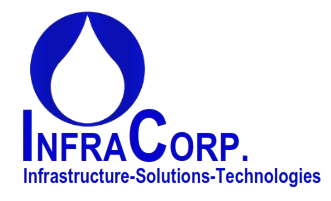H2T™ | Hard-to-Treat Technology
Engineered for Complexity. Proven for Results.
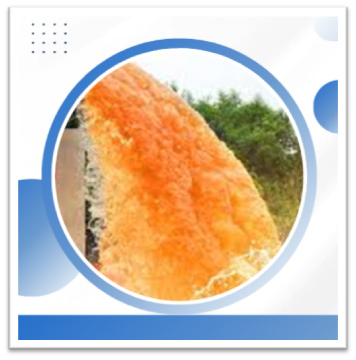
H2T™ is our dedicated platform for solving the most challenging industrial water and wastewater streams.
Whether it’s high-salinity brines, refractory organics, PFAS, toxic loads, or high-COD industrial effluents, H2T™ delivers proven, engineered solutions where conventional technologies fail.
From compliance to water reuse to zero liquid discharge (ZLD), our integrated technologies — including biological (BioSep™), advanced oxidation (DioxPro™), electrochemical, and membrane systems — help industries turn complex wastewater liabilities into sustainable
Typical Problem Waters We Solve:
- High Salinity / TDS
- Refractory Organics (Dyes, Phenols, PFAS, APIs)
- High COD / BOD / Toxic Loads
- Heavy Metals (As, Hg, Cr, Pb, Cd)
- Oils, Grease, Emulsions
- Surfactants, Solvents, Process Chemicals
- Contaminants , Mercaptans , toxic gases
H2T™ | Hard-to-Treat Technology by InfraCorp
Solving Industry’s Most Challenging Water Problems.
When water is more than just dirty — when it’s chemically complex, toxic, or resistant to conventional treatment — InfraCorp delivers with H2T™. At InfraCorp, we specialize in tackling the most difficult and complex industrial water challenges.
Our Hard-to-Treat Technology platform brings together the most advanced solutions, engineered specifically for industries facing the toughest wastewater challenges. From high-salinity brines to persistent organics, we make the impossible practical.
H2T™ = Technology + Expertise + Outcomes.
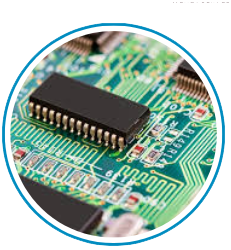
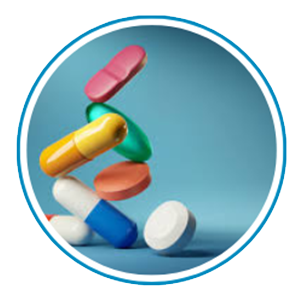
Our Technology Toolbox
Integrated. Modular. Proven.
We deploy customized treatment trains using best-in-class, advanced technologies.
Each solution is engineered for performance, reliability, and lifecycle value.
Our Core Capabilities Include:
- Advanced Oxidation (AOP, Ozone, Peroxone, UV-H₂O₂)
- High-Performance Membrane Systems (UF / NF / RO / Ceramic)
- Electrochemical & Electrocoagulation Systems
- Biological Treatment (MBBR / BioSep™ with NanoChip™ Technology)
- Zero Liquid Discharge (ZLD) / Crystallization
- Selective Adsorbents / Ion Exchange / Resin Technologies
- Activated Carbon, Media Filtration, and Polishing Units
About H₂T™
Engineered for Complexity. Proven for Results.
H2T™ | Hard-to-Treat Technology by InfraCorp / NanoWater specializes in one thing: making complex, contaminated, and industrially challenging water treatable.
Where conventional treatment technologies fail, H2T™ succeeds.
From high-strength organics and toxic metals to refractory compounds and saline brines, H2T™ delivers targeted, integrated solutions to help industries achieve compliance, reduce risk, and unlock value through water reuse and sustainability.
What is H2T™?
H2T™ (Hard-to-Treat Technology) is InfraCorp’s dedicated technology platform designed specifically for the world’s most complex, contaminated, and difficult industrial water streams.
Where conventional solutions fail, H2T™ succeeds.
What We Solve
Specializing in the Most Challenging Water Streams:
- High COD / BOD Industrial Wastewaters
- Toxic and Refractory Organics (Phenols, PFAS, APIs)
- High TDS Brines / Concentrates
- Heavy Metals (As, Hg, Cr, Pb, Cd)
- Oils, Greases, Surfactants, and Emulsions
- Complex Chemical Mixtures / Hazardous Wastewaters
- Landfill Leachate & Specialty Industrial Effluents
- Gas Extraction Technologies
What Makes H2T™ Different?
- Engineered for Extremes — Capable of handling the most toxic, variable, and concentrated wastewaters.
- Integrated Approach — Combining BioSep™ biological treatment, Ozonic™ AOP, DioxPro™ disinfection, advanced membranes, and Min™ZLD crystallization.
- Field-Proven Performance — Across the harshest industries and environments.
Sustainable Outcomes — Compliance, water reuse, resource recovery, zero liquid discharge (ZLD).
H2T™ Delivers Advanced Solutions Through Integrated Technologies:
- BioSep™ with NanoChip™: Enhanced Biological Treatment for High COD
- DioxPro™ AOP Systems: Advanced Oxidation for Refractory Organics & PFAS
- Min™ZLD: Zero Liquid Discharge & Brine Concentration
- Electrochemical Treatment: Electrocoagulation, Electro-oxidation
- Advanced Membranes: UF, NF, RO, Ceramic for Complex Separation
- Selective Adsorption / Ion Exchange: Metals, Organics, Polishing
- Specialty Chemical Programs:RiteDos™, SalTech™, SeaVolt™
The H2T™ Advantage:
- Compliance Made Certain — Meet even the strictest discharge and reuse regulations.
- Operational Risk Reduced — Protect your assets, people, and reputation.
- Water Reuse Enabled — Turn wastewater into a recoverable resource.
- ESG Targets Delivered — Reduce water footprint, energy use, and environmental impact.
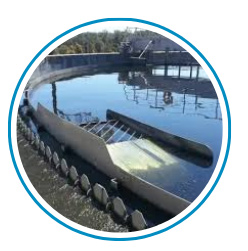
Because Not All Water Can Be Treated by Conventional Means. We are Solving What Others Can’t. Delivering What Industry Needs.
At InfraCorp / NanoWater, we understand these realities because we’ve built our reputation solving them.
H2T™ | Hard-to-Treat Technology is our answer.

InfraCorp | H2T™ Treatment Philosophy
H2T™ (Hard-to-Treat Technology) represents InfraCorp’s integrated approach to tackling the world’s most challenging industrial water streams.
Our philosophy combines multi-barrier treatment design, advanced materials, and process hybridization to transform complex effluents into reusable or discharge-compliant water.
InfraCorp’s H2T™ platform leverages:
- Advanced Oxidation & Catalytic Ozonation – Destroys refractory and volatile organics, including PFAS, phenols, and mercaptans.
- Hybrid Biological-Membrane Systems (BioSep™, MBBR, MBR) – Biologically degrades soluble organics while enhancing solids separation and resilience.
- High-Pressure & Hybrid RO Platforms (HyRO™, HCRO™, XtremeRO™) – Achieves high water recovery from saline or toxic streams.
- Selective Ion& Metal Removal – Integrates nanofiltration, electrochemical reduction, and sorptive media for heavy metal and TDS control.
- Thermal & ZLD Integration (ThermoRO™, Min™ZLD, ZLDx™) – Maximizes water reuse and minimizes brine discharge.
- Gas-Phase Treatment &Odor Control – Neutralizes volatile and sulfurous compounds for worker and environmental safety.
Result: A modular, scalable, and sustainable treatment architecture that enables industries to Reclaim, Reuse, and Recover—even from the hardest-to-treat waters.
Common Characteristics of Hard-to-Treat (H2T™) Industrial Water Streams
-
- High COD/BOD:
Elevated chemical and biological oxygen demand caused by complex organic loads and limited biodegradability. - Refractory Organics:
Persistent and recalcitrant compounds such as phenols, dyes, surfactants, pharmaceuticals, pesticides, PFAS, and other emerging contaminants that resist conventional treatment. - High TDS / Salinity:
Excessive levels of dissolved salts, brines, and minerals—typical in desalination reject, chemical, and mining effluents—leading to scaling and osmotic stress in membranes. - Toxic Heavy Metals:
Presence of hazardous metals including arsenic, mercury, chromium, lead, cadmium, nickel, and copper that require selective removal, immobilization, or reduction. - Oil, Grease & Stable Emulsions:
Hydrocarbon-rich or emulsified wastewaters common in petrochemical, refinery, automotive, and food industries that demand physicochemical or electrochemical separation. - Surfactants, Solvents & Industrial Chemicals:
Complex mixtures of cleaning agents, degreasers, and process solvents that cause foaming, membrane fouling, and inhibition of biological systems. - Volatile & Odorous Compounds:
Inclusion of mercaptans, sulfides, ammonia, and volatile organic compounds (VOCs) that release toxic or malodorous gases, posing both safety and environmental concerns. - Extreme pH, Temperature & Toxicity:
Streams with high acidity, alkalinity, or temperature, often coupled with toxic inhibitors, requiring robust materials and process resilience.
- High COD/BOD:
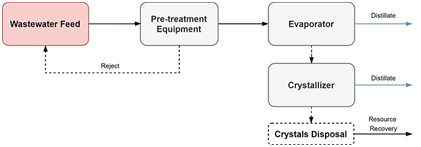
How to Approach Such Projects (Best Practices)
-
- Detailed Characterization: Full water chemistry, flow variability, treatability studies.
- Pilot Testing: Prove technologies in combination on real water.
- Modular, Staged Solutions: Allow adjustment and optimization.
- Lifecycle Cost Analysis: Not just CapEx; consider OpEx, energy, consumables
Hard-to-Treat Complex streams comes from Industrial Water Streams generated from industrial processes that contain a combination of contaminants that make conventional treatment methods insufficient or ineffective. Such streams often require advanced, multi-step treatment strategies and customized solutions.Our Hard-to-Treat Technology platform brings together the most advanced solutions, engineered specifically for industries facing the toughest wastewater challenges. From high-salinity brines to persistent organics, we make the impossible practical
